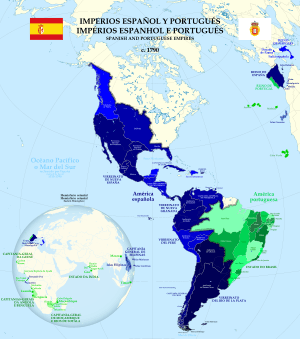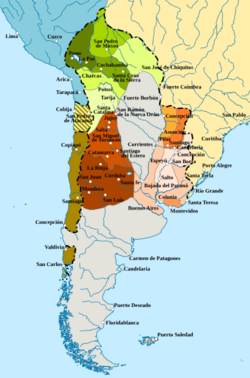Viceroyalty of the Río de la Plata facts for kids
Quick facts for kids
Viceroyalty of the Río de la Plata
Virreinato del Río de la Plata or Provincias del Río de la Plata
|
|||||||||||||
|---|---|---|---|---|---|---|---|---|---|---|---|---|---|
| 1776–1825 | |||||||||||||
|
|
|||||||||||||
|
Motto: Plus Ultra
"Further Beyond" |
|||||||||||||

Viceroyalty of the Río de la Plata and de jure extension (light green)
|
|||||||||||||
| Status | Viceroyalty of the Spanish Empire | ||||||||||||
| Capital | Buenos Aires (1776–1810) Montevideo (1811–1814) |
||||||||||||
| Common languages | Spanish (official, administrative) Indigenous languages |
||||||||||||
| Religion | Roman Catholicism | ||||||||||||
| Government | Monarchy | ||||||||||||
| Monarch | |||||||||||||
|
• 1776–1788
|
Charles III (first) | ||||||||||||
|
• 1813–1825
|
Ferdinand VII (last) | ||||||||||||
| Viceroy | |||||||||||||
| History | |||||||||||||
|
• Organized
|
1 August 1776 | ||||||||||||
| 1st – 2 January 1806 2nd – 3 February 1807 |
|||||||||||||
| 25 May 1810 | |||||||||||||
| 28 September 1810 | |||||||||||||
|
• Fall of Montevideo
|
23 June 1814 | ||||||||||||
|
• Formally abolished after the Campaign of Sucre in Upper Peru
|
1 April 1825 | ||||||||||||
| Currency | Spanish real | ||||||||||||
|
|||||||||||||
The Viceroyalty of the Río de la Plata (meaning "River of the Silver") was a large area in southern South America. It was the last and shortest-lived of the Spanish Empire's viceroyalties in the Americas. A viceroyalty was like a big colony ruled by a viceroy, who was the king's representative.
This viceroyalty was created in 1776. It included parts of what are now Argentina, Bolivia, Paraguay, and Uruguay. It also included Equatorial Guinea in Africa. Buenos Aires was chosen as its capital city. The Spanish king wanted to create this new area for two main reasons: to control trade better and to protect his lands from Great Britain and Portugal.
However, the people living there started to want more freedom. Between 1780 and 1782, a big revolt happened in the highlands, showing how unhappy people were with Spanish rule. Later, local people of Spanish descent, called Criollos, successfully defended Buenos Aires and Montevideo from two British attacks. This made them feel stronger and more independent, especially since Spain couldn't help them.
In 1809, Criollos in some cities started their own governments. These events led to the May Revolution in 1810, when the viceroy in Buenos Aires was removed. The name "Provincias del Río de la Plata" was officially used in 1810. The revolution spread, but Paraguay became independent in 1811. Other areas remained loyal to Spain for a while. The Viceroyalty officially ended in 1825.
Contents
History of the Viceroyalty
How the Viceroyalty Began
In 1680, Portugal built a fort called Colonia del Sacramento in what is now Uruguay. This was part of Portugal's plan to expand its territory in South America. Spain quickly took the fort in 1681, but later gave it back to Portugal.
Before the Viceroyalty of the Río de la Plata was created, all trade in the region had to go through Lima, a port on the Pacific Ocean. This made trade very slow and encouraged a lot of illegal trading in cities like Buenos Aires and Montevideo.
To fix these problems, King Charles III decided to create the new Viceroyalty of the Río de la Plata in 1776. He appointed Pedro Antonio de Cevallos as the first viceroy. The new viceroyalty was meant to help the region grow and to protect Spanish lands.
Spain also wanted to stop Portugal from taking more land. King Charles III saw a good chance to act because France was an ally, and Great Britain was busy with its own problems in North America. Pedro de Cevallos successfully took Colonia del Sacramento from Portugal. This led to a treaty where Portugal left the Río de la Plata area to Spain. In return, Spain gave Portugal the area of Rio Grande do Sul.
Early Years of the Viceroyalty
Spain tried to make trade easier for the new viceroyalty. They allowed Spanish ships to trade directly through Buenos Aires. This helped trade between Spain and its American colonies grow a lot. Buenos Aires and Montevideo also got customs offices to manage trade.
In 1782, the Spanish king changed how the territory was divided. He replaced the old system with "Intendencias" to make royal rule stronger. Buenos Aires became the main Intendencia. The Real Audiencia of Buenos Aires, a high court, was also brought back.
The Falkland Islands also became part of the Viceroyalty's administration in 1767. A dispute with Britain over these islands almost led to war in 1770.
Challenges and Decline
By the 1800s, Buenos Aires was becoming more self-sufficient. It produced a lot of cattle. However, wars with Great Britain hurt the region's economy because ships couldn't travel easily. The northern parts of the viceroyalty, especially Upper Peru, started to resist supporting Buenos Aires. The silver production from Potosí, which paid for many expenses, was also decreasing.
The Napoleonic Wars in Europe caused big problems for Spain. In 1805, Spain lost its navy in a battle against Britain. This meant Spain couldn't protect its colonies.
In 1806, British forces invaded Buenos Aires. The viceroy, Rafael de Sobremonte, fled. But local people, led by Santiago de Liniers, fought back and forced the British out. In 1807, the British tried again, capturing Montevideo. However, they were defeated when they attacked Buenos Aires. These victories by local forces made the people feel confident and pushed them towards wanting independence from Spain.
By 1814, Argentina had been governing itself for about four years. Paraguay had already declared its independence. The Viceroyalty officially ended as a Spanish political area in 1825, after the last viceroy died.
How the Viceroyalty Was Governed
The Viceroyalty of the Río de la Plata was created by the King of Spain. Even though it was a Spanish colony, it was technically seen as the King's personal property. This meant it could have its own laws, separate from Spain's.
Main Areas and Cities
The Viceroyalty was divided into several main areas, each with its own important cities:
- Intendency of Buenos Aires: Included cities like Buenos Aires, Corrientes, and Santa Fe.
- Government of Montevideo: Focused on the city of Montevideo.
- Government of Misiones: Included cities like San Ignacio.
- Intendency of Paraguay: Centered around the city of Asunción.
- Intendency of Córdoba: Included cities like Córdoba and Mendoza.
- Intendency of Salta: Included cities like Salta and Tucumán.
- Intendency of Potosí: Included Potosí and Oruro.
- Intendency of La Paz: Focused on the city of La Paz.
- Intendency of Cochabamba: Included Cochabamba and Santa Cruz de la Sierra.
- Intendency of Charcas: Focused on the city of Charcas (modern Sucre).
- Government of Chiquitos and Government of Moxos were also part of the Viceroyalty.
List of Viceroys
The King of Spain chose viceroys to rule the viceroyalties for him. At first, they could rule for life, but later their terms were set for three to five years. Because of the long distance and slow travel by ship, it took a long time for a new viceroy to arrive and start ruling. This meant viceroys often had to make decisions on their own.
| # | Picture | Name | Term | Designation | Notes |
|---|---|---|---|---|---|
| 1 | 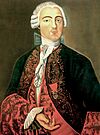 |
Pedro Antonio de Cevallos | 15 October 1777 – 26 June 1778 | 1 August 1776 | Appointed by Charles III of Spain |
| 2 |  |
Juan José de Vértiz y Salcedo | 26 June 1778 – 7 March 1784 | 27 October 1777 | Appointed by Charles III of Spain; resigned |
| 3 | 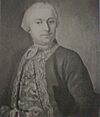 |
Nicolás del Campo | 7 March 1784 – 4 December 1789 | 13 August 1783 | Appointed by Charles III of Spain |
| 4 |  |
Nicolás Antonio de Arredondo | 4 December 1789 – 16 March 1795 | 21 March 1789 | Appointed by Charles IV of Spain, resigned |
| 5 | 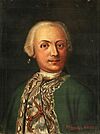 |
Pedro Melo de Portugal | 16 March 1795 – 15 April 1797 | 5 February 1794 | Appointed by Charles IV of Spain, died in office |
| - | Real Audiencia of Buenos Aires | 15 April 1797 – 2 May 1797 | Interim government until the arrival of a new viceroy | ||
| 6 |  |
Antonio Olaguer Feliú | 2 May 1797 – 14 May 1799 | He dealt with British and Portuguese forces and growing calls for change. He opened the port of Buenos Aires to foreign trade. | |
| 7 | 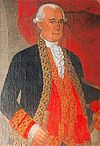 |
Gabriel de Avilés, 2nd Marquis of Avilés |
14 March 1799 – 20 May 1801 | 25 October 1797 | |
| 8 |  |
Joaquín del Pino y Rozas | 20 May 1801 – 11 April 1804 | 14 July 1800 | Appointed by Charles IV of Spain, died in office |
| 9 | 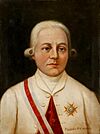 |
Rafael de Sobremonte | 24 April 1804 – 10 February 1807 | 10 November 1804 | During the British invasions of the Río de la Plata, Buenos Aires and Montevideo were briefly under British control. Sobremonte was removed from his position. |
| 10 | 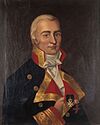 |
Santiago de Liniers | 10 February 1807 – 30 June 1809 | Interim viceroy, later confirmed by the king. | |
| 11 | 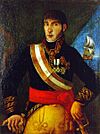 |
Baltasar Hidalgo de Cisneros | 15 July 1809 – 25 May 1810 | 11 February 1809 | Appointed by the Spanish government, removed from office by the May Revolution. |
| 12 | 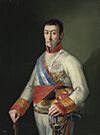 |
Francisco Javier de Elío | 19 January 1811 – January 1812 | 31 August 1810 | Governor of Montevideo, declared himself "viceroy." The Spanish government recognized him and made Montevideo the new capital. |
| 13 | 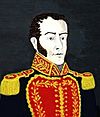 |
Pedro Antonio Olañeta | 27 May 1825 | 1825 | Appointed by the King of Spain in May 1825, but he had died three months earlier. |
See also
- List of governors in the viceroyalty of the Río de la Plata
- Argentine War of Independence
- United Provinces of the Río de la Plata
- History of Argentina
- History of Bolivia
- History of Paraguay
- History of Uruguay
- Spanish Guinea
- Viceroyalty of Peru
- Viceroyalty of New Granada




